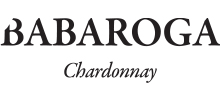BABAROGA is a high-ranking witch from Slavic mythology who has, over many centuries, had a dominant influence in the chastising of ill-mannered children. Her most recognizable features are a horn, a big nose with a wart, missing teeth, a witch’s staff and the cave she lives in. Children have long since figured her out and don’t believe in her anymore, but the word ‘Babaroga!’ is now used in slang instead of the slightly forgotten ‘Wicked!’ to express something awesome or exceptionally good…

SAGA is a word which, in its broadest sense, denotes a long story or an account of an event, shared in the form of oral storytelling. The word stems from Old Norse and used to mean something that was narrated or conveyed orally. Today it is also used outside of the context of Nordic literature and refers to multi-volume complex literary works, i.e. epic prose which covers a long time period, often chronicling the history of a family.

GRAFFITI is a means of conveying messages in the form of writings or drawings scribbled on a surface in a public place. The origin of graffiti dates far back in history, all the way to the prehistoric paintings on cave walls, but in today’s sense of the word it has its roots in ancient Rome where you had to scrawl graffiti on the wall if you wanted to share a message with the public. The walls of Pompeii are covered with examples of this ancient Roman custom. Modern graffiti artists use mainly airbrush and stencils in their work, while their motifs and techniques are decidedly diverse. They represent authentic art of the new age, often misunderstood and underrated by the conservative public. It is a paradox that that these works of art are free and available to everyone while their authors are often pursued by the police and have to create deeply underground.

Wine lovers from Spain, once described Babaroga as a wine with “the charm of evil”.
And that is how Babaroga got its brother-EVIL

